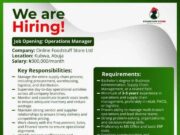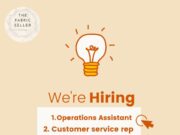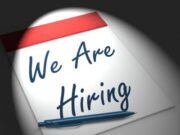In a sharply candid message to Amazon’s global workforce, CEO Andy Jassy has once again confirmed that the relentless advance of artificial intelligence (AI) is poised to reshape the company’s labour structure—moving away from traditional corporate roles toward an AI-led future.
During a recent interview with CNBC, Jassy clarified that, as AI systems take over routine corporate functions, “there will be fewer people doing some of the jobs that the technology actually starts to automate.” This follows a June 17 internal memo sent to Amazon’s 1.5 million employees in which Jassy forecasted a leaner corporate workforce within the next few years.
Table of Contents
A Deep Dive into Jassy’s Warning
In his internal memo, Jassy delineated a two-pronged transformation:
- Automation of Routine Tasks
AI agents and generative systems will increasingly handle repetitive responsibilities—coding, analytics, research—traditionally performed by humans. - Role Reconfiguration & Workforce Reduction
Certain job categories will become obsolete, while others will emerge to support AI-driven initiatives. This shift will reduce Amazon’s total headcount in corporate functions as efficiency rises.
He emphasized that employees must adapt—whether through upskilling or transitioning to new roles—to stay relevant in the evolving organizational landscape .
The Scale of Change: Layoffs & Automation
Amazon is no stranger to workforce reductions. Since 2022, over 27,000 roles have been cut across retail, devices, and communications teams. These reductions have continued into 2025—with recent layoffs impacting the Books division, Kindle, Goodreads, podcast services, and more, each move aimed at removing management layers and streamlining operations.
The driving force? A deliberate AI-first approach is intended to eliminate excess bureaucracy and lower costs. As Jassy observed: “AI will free employees from rote work,” enabling a more agile, innovation-driven workforce.
The Role of AI in Day‑to‑Day Operations
Amazon is rapidly integrating AI across its ecosystem: over 1,000 generative AI tools are already in use—from Alexa+ enhancements to intelligent shopping features. Notably, AI coding assistants have shaved off the equivalent of 4,500 programmer years by expediting software updates.
On the logistics side, robotics plays a pivotal role: Amazon recently deployed its millionth robot in a Japanese fulfilment centre, with automation supporting more than 75% of the company’s global delivery. This trend is expected to proliferate throughout the organisation.

Internal Reaction: A Workforce on Edge
Jassy’s reminders have not fallen on deaf ears. Internal backlash has been notable, with employees taking to Slack and other internal channels to voice their anxiety and frustration. In one sarcastic comment, a staffer wrote: “Nothing more motivating on a Tuesday than reading that your job will be replaced by AI in a few years.”
Such sentiment underscores broader industry tension: while many view AI as a tool for growth, corporate employees are already feeling the heat of structural upheaval.
Industry Context: Amazon Follows Broader Tech Trends
Amazon’s workforce strategy is part of a larger phenomenon. In the first half of 2025 alone, tech giants like Intel, Microsoft, Google, Meta, and others collectively eliminated over 62,000 jobs. These cuts reflect a collective push toward operational efficiency, AI adoption, and tighter cost controls.
Meta eliminated roughly 5% of its workforce; Google and Microsoft followed similar trends. Amazon’s ongoing reductions—affecting devices/services, communications, and content divisions—align directly with this broader restructuring.
What Jassy Expects of Employees
Jassy has issued a clear call to action: adapt, evolve, or move on. His message has consistently emphasized:
- Adaptability: Embrace new roles, learn AI-related skills, and pivot away from repetitive tasks.
- Innovation: With AI absorbing the mundane, employees should focus on creative, strategic work.
- Ownership: Those unable or unwilling to transition should consider other paths—either within new Amazon teams or beyond.
Jassy’s message leverages Amazon’s “Leadership Principles”—ownership, bias for action, and inventiveness—as the cornerstone of this automation age.
Implications for the Workforce & Job Market
The ripple effects of Amazon’s automated future are multifaceted:
- Reskilling Imperative
Employees must pivot to roles in AI oversight, prompt design, machine learning, data science, and digital product leadership. - Corporate Culture Shift
Routine tasks—coding upgrades, data manipulation—will decline. Instead, strategic thinking and innovation-focused collaboration will take centre stage. - Pressure on Job Security
Employees tied to legacy systems—marketing analytics, middle management—face heightened risk as AI grows more capable digitally. - Talent Landscape Volatility
As mid-tier roles diminish, demand will surge for high-skill specialities and adaptable talent versed in AI collaboration.
Jassy’s Take: Not All Doom and Gloom
Despite the stark tone, Jassy sees promise:
- He frames AI as a liberator: “make all our jobs more interesting,” he said, while enabling teams to “focus on innovation and higher-value tasks.”
- He advocates a renaissance of workplace purpose: with AI managing the mundane, employees can concentrate on designing products, crafting strategies, and driving customer value.
It’s a narrative hearkening back to the AI promise: automate the routine, empower the creative.
What’s Next: The Roadmap Ahead
Timeline: The transformation is already underway, with workforce reductions scheduled over the next few years. Expect accelerated AI deployment across software, marketing, logistics, and support.
Employee Strategy: Amazon’s HR and L&D teams are launching retraining programmes to equip staff with AI fluency and digital leadership skills. The onus, however, falls on individuals to capitalize on these resources.
Industry Response: As Amazon charts this transformation, peers in tech and retail are expected to match or exceed these changes, raising the bar on AI deployment and workforce evolution.
Expert View: A Turning Point in Work Culture
AI expert Dr. Sara Liu from Stanford notes:
“Amazon’s strategy reflects the broader shift—AI won’t just automate tasks, it will redefine roles. Workers who pivot now have a real opportunity to become unicorns in the AI workplace; those who don’t may find themselves outpaced.”
This underscores a central truth: resilience and adaptability will define who thrives in tomorrow’s job market.

Summary: The Future of Work at Amazon
| Theme | Summary |
|---|---|
| Automation Surge | AI and bots replace routine corporate work. |
| Job Transformation | Fewer routine roles; more high-value, strategic positions. |
| Employee Challenge | Adapt genes are now mandatory. |
| Organizational Shift | Corporate structure is slimming to align with new AI-native workflows. |
Final Take
Andy Jassy’s message is clear: Amazon is entering a new era. One where algorithms handle the mundane, empowering humans to push innovation. It is an evolutionary leap—not a callous corporate cutback. Success in this environment demands agility, digital fluency, and a willingness to reinvent one’s role.
Amazon’s AI-driven future isn’t optional—it’s imminent. As employees brace for change, the wider tech industry watches closely. The firm that harnesses automation without sacrificing human ingenuity wins.
Join Our Social Media Channels:
WhatsApp: NaijaEyes
Facebook: NaijaEyes
Twitter: NaijaEyes
Instagram: NaijaEyes
TikTok: NaijaEyes







































